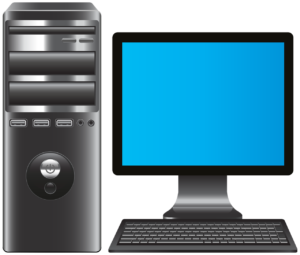
The modern world of technological innovations makes both housewives and business owners float back and forth, trying to make up their minds whether to purchase new computers and printers or check the market for second-hand desktops. Monitoring technology at the pace it has been evolving and the necessity to stay abreast with the latest equipment, a majority of individuals and businesses are discovering that the best value that will not compromise on robustness or performance can be realised through refurbished desktop computers.
Appreciating the Allure of Secondhand Desktop Computers
The refurbished desktop industry has transformed considerably in the past decade, but instead of retaining its status as a niche market that served its clients largely in a consumer-based market with a very low budget, it has become a favorite among other shrewd buyers of all classes and strata of society. A rising understanding that newer does not always equate to better, particularly in light of the particular requirements of common home and office computing chores, is reflected in this change.
A closer look at the refurbished desktop computer market reveals that these devices frequently provide exceptional value. In business settings, many of these systems were replaced as part of regular technology refresh cycles rather than because of performance problems. These business-grade computers usually contain professional-grade parts, sturdy construction, and have been maintained in compliance with stringent corporate IT guidelines.
It is aware of this potential possibility and therefore companies like AsNew have built a business in the field of offering top-class refurbished systems that are at par or better than the performance needs of the clients. Besides being known to offer competitive prices, these specialty shops are also aware that the key to success in the reconditioned market entails ensuring that every system undergoes a desirable regime of testing, cleaning, and restoring.
Selecting Refurbished Systems Has Economic Benefits
Both individual customers and corporate buyers find used desktops to be attractive from a purely economic standpoint. It is well known that computer hardware and other new systems depreciate very sharply over time, and new systems can lose much of their value within the first year of ownership. Due to this depreciation, consumers interested in acquiring refurbished desktop computers are able to acquire systems that are perhaps a year to three years old at a much cheaper price than what they would have paid to acquire new, similar systems.
Cash-strapped home users may also use the savings from spending the money on used desktops to cover other required tech investments, such as network equipment, software licensing, or monitors. Often, this reallocation of the technology budget leads to a more complete and functional arrangement than would be achievable with a desktop purchase alone.
Refurbished desktop computers offer certain financial benefits to business settings. The total savings might be significant when outfitting large workplaces or replacing several workstations at once. Since many commercial computing jobs don’t require the newest hardware capabilities, these savings become even more important. Somewhat older but well-maintained systems are perfectly fine for daily operations.
Practical Applications and Performance Aspects
For first-time customers who may have preconceived ideas about the capabilities of older hardware, the performance qualities of used desktops frequently surprise them. Modern computer processors, memory systems, and storage technologies have matured to the point where many-year-old systems can still perform exceptionally well for most computing applications that are encountered in both home and professional settings.
The most common household uses of computers that require no high-performance requirements, such as Web browsing, document creation, email management, video consumption, and light gaming, are when refurbished desktop computers can be much more than sufficient. It is essential to realize that you need to understand your particular needs. Then, the problem is to decide whether the refurbished options available in the market will fit them. Many customers find that, at a far lower price than they would pay for new technology, they can nevertheless acquire systems with specs that surpass their actual needs. When business-grade gear is adequately refurbished, its dependability and consistency can even outperform some new consumer-oriented systems.
Elements of Reliability and Quality Assurance
The dependability and endurance of used desktops are among the main worries that prospective purchasers have. To overcome these issues, trustworthy vendors of refurbished desktop computers have created thorough procedures. Systematic testing of all major components, replacement of worn parts, thorough cleaning, and frequently the installation of new operating systems are all part of professional refurbishing.
The strict quality control methods used by companies that specialize in refurbished equipment, like AsNew, can provide systems that are more dependable than some new PCs. Before systems are delivered to clients, these procedures frequently involve stress testing, burn-in times, and thorough diagnostics to find and fix possible problems.
The component quality of many used desktops, especially those from business settings, is frequently higher than what buyers may find in new systems of comparable price.
Sustainability and Impact on the Environment
Environmental benefits that come with choosing refurbished desktop computers can be much greater than the cost. Refurbishing and reselling old computer equipment extends their useful lives and reduces the environmental impact of manufacturing new equipment. Among the waste categories with the highest growth rate is electronic waste around the world.
The minimal use of resources is one of the aspects promoted in the circular economy model; hence, businesses and customers who decide to use used desktops, instead of purchasing new ones, are contributing to this process actively. This decision reduces the need for new manufacturing, which lowers the consumption of raw materials, energy consumption of production facilities, and carbon emissions involved in transportation.
One environmentally conscious method of consuming technology is the refurbishment process itself. Instead of letting working gear wind up in recycling facilities or landfills, businesses like AsNew prolong product lifespans and guarantee that priceless computer resources continue to be put to good use.



Pingback: Sit Stand Desk Cable Management